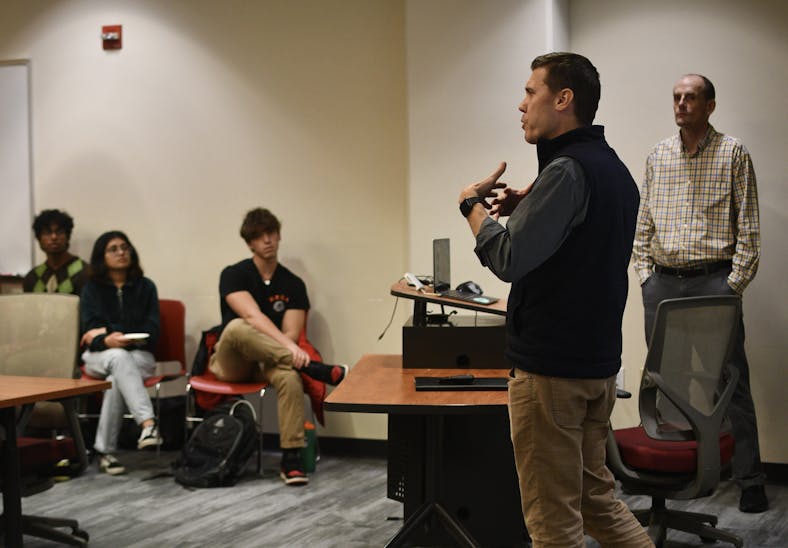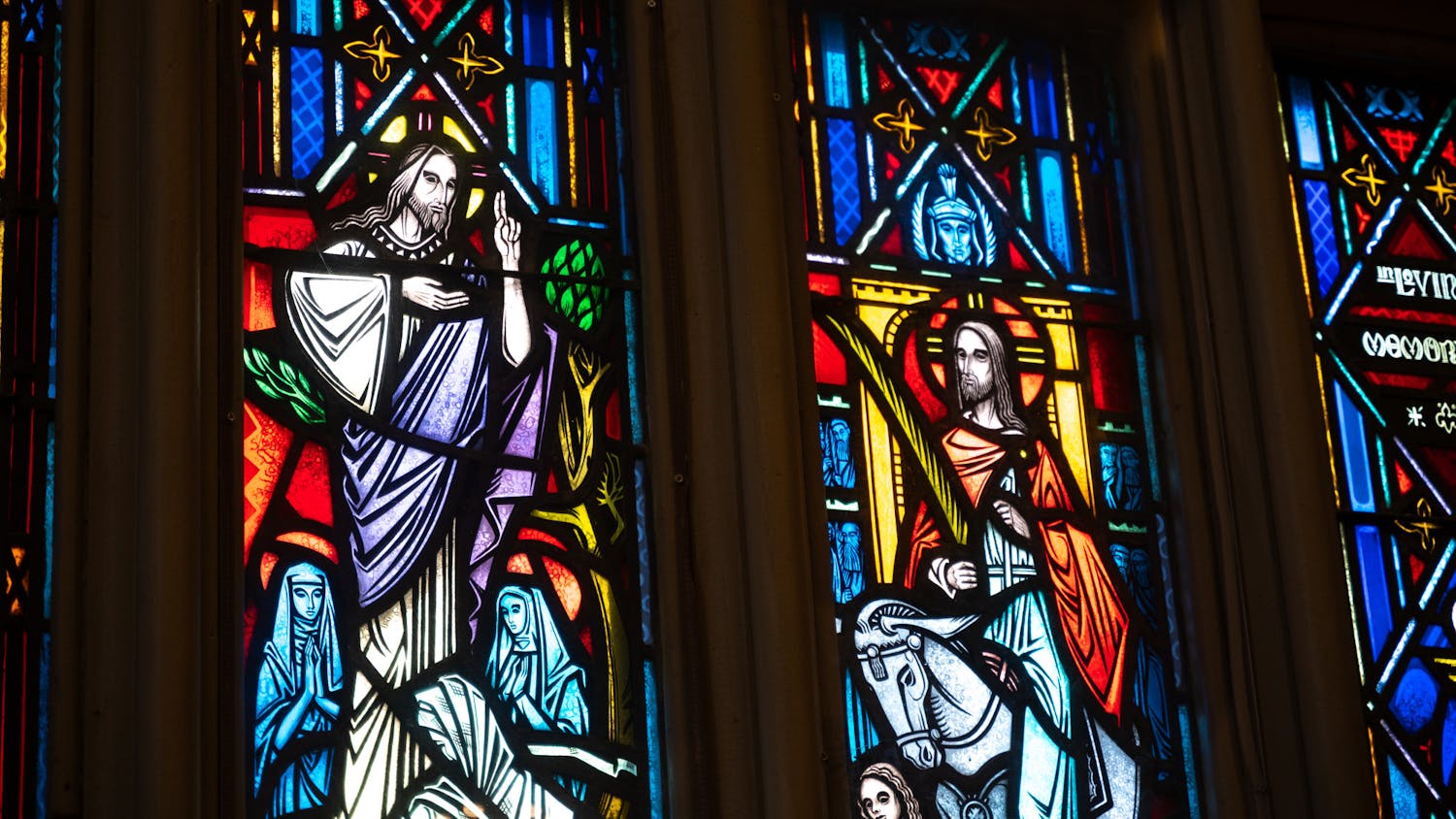The Associated Students of Madison (ASM) Sustainability Committee held a forum on Nov. 9 alongside the West Campus District Plan (WCDP) development team to seek student input for improving sustainability and equity in the 30-year plan.
“Sustainability is an area that we’ve been talking about since we started our project, but it’s usually been lower on our list,” WCDP Director Paul Seitz said.
Environmental advocates at the University of Wisconsin-Madison and 350 Wisconsin, a local environmental nonprofit, raised concerns about a lack of sustainability over the summer.
While the project team was interested in having select student leaders advocate for the student body, ASM Sustainability logistics coordinator and former 350 Wisconsin intern Winston Thompson said he pushed for an open forum for all students.
Wisconsin 350 currently has a petition with over 100 signatures calling for support of sustainability in the WCDP.
“This meeting shows how much students are engaged and care about the plan,” Thompson told The Daily Cardinal.
With over 40 students in attendance, ASM and WCDP leaders said they were thrilled with the engagement and turn out.
“It’s really students that have that energy when it comes to sustainability,” District 8 Ald. MGR Govindarajan told the Cardinal.
“I am so energized that we get to be with you today and I'm so glad you're here,” said Vanessa Herald, a project manager in the Office of Strategic Consulting and a member of the WCDP team. “I want to know more about what you all think. We want to know more.”
Seitz and Interim Director of Campus Planning & Landscape Architecture Aaron Williams gave an overview of the plan and the team’s priorities.
The WCDP team’s main sustainability goals are to implement green infrastructure, improve non-single vehicle occupancy transportation and to add more green spaces, according to Seitz.
“We’re thinking about how we can energize the area in the most sustainable way possible,” said Josh Arnold, campus energy advisor for the Office of Sustainability.
Seitz emphasized the importance of recognizing the area’s Indigenous history.
“It’s important to have land acknowledgements,” Seitz said. “It’s also important to do more.”
Seitz said the WCDP includes housing plans to address the city’s growing population. Two more hotels will also be added due to UW Hospital patients keeping the single Best Western over 95% capacity the majority of the year, according to Seitz.
Student concerns for West Campus
Emmett Lockwood, ASM Equity and Inclusion Committee Chair, questioned during the forum if WCDP sidewalks would be up to the 1990 Americans with Disabilities Act (ADA) or ADA-2010 standards. The latter requires wider sidewalks and tactile paving mats for visually-impaired individuals to sense dips in the sidewalk.
Williams said he believes sidewalks would be up to the new standard.
Carolyn Shumaker, a zero-waste project assistant in the Office of Sustainability, said West Campus is a possible location for an in-vessel composter, which can process compostable materials and minimize emissions, according to waste management company Biocycle.
Currently, there is only “back of house” collection in select dining halls, Memorial Union and Union South, according to UW-Madison's Division of Facilities Planning & Management. Compostable dishware is not composted in this program.
An on-campus facility would also reduce the fossil fuels used for transportation of compostable materials.
“I think [West Campus] could be a possibility,” Shumaker said. “But I’m worried the UW-Madison won’t sign off on it because the Dane County landfill will be building a composting facility in the next 10 years.”
Student spaces, transportation

Students thought West Campus could be a place for more multicultural centers on campus, similar to the Red Gym.
A Native American center could be a way to recognize the Indigenous history of the area, according to UW-Madison student Shelby Jantz.
Having space for “a Native student liaison to facilitate communication between students and the university would institutionalize that relationship so they’re better supported,” Jantz added.
Jantz asked during the forum if effigy mounds would be better recognized. After different interactions with Native Nations, Williams said “there’s not one thing that we can do.” Since Native traditions are often passed down through oral tradition, signs and maps don’t age well, Williams said.
Govindarajan asked about possible improvements to transportation, like the 80 metro line, especially considering West District’s distance from main campus.
Govindarajan also asked about the affordability model of the new housing since WCDP team members mentioned it would be mixed general and affordable housing.
He believes it will likely be area median income housing, which is targeted at families, so students will not be eligible. “It’s not meant to be student housing,” he added.
WCDP’s reaction to student concerns
“[The WCDP team has] been receptive, but there’s always more room to be involved with the community,” Govindarajan said.
“They were not only listening and repeating what students were saying, but also helping build off of ideas,” Emerson said. “There was just super clear, active engagement.”
“We define sustainability in part by the students, so it’s really important that the students have a voice,” Arnold added.
Members of the WCDP team also practiced “expectation management” to communicate which student-driven outcomes are realistic, according to Thompson.
At the end of the forum, Seitz took contacts for future collaboration with other student groups. The team plans continual work with shared governance and leadership to reflect student and UW-Madison priorities in the plan, Seitz said.

This article was updated at 7:00 p.m. on Sunday, Dec. 10, 2023.
Mary Bosch is the college news editor and photo editor emeritus for The Daily Cardinal. She is a second year journalism and sociology student with a focus in data. Follow her on twitter: @Mary_Bosch6






